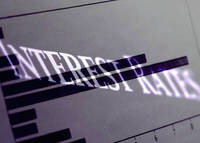| Home | About | Archives | RSS Feed |

The Independent Investor: Made In America Returns
 |
The number of manufacturing jobs in this country has been growing over the last two years. Factories have added 300,000 jobs since 2009. In the first month of this year alone manufacturers have added 50,000 jobs, which was the biggest monthly increase in a year. Those numbers are positive and a good start but let's keep the gains in perspective.
Despite this recent progress, it still leaves us with 5.5 million fewer factory jobs than in July 2002 and 12 million less than we had in 1990. I don't believe we will ever recapture the number of manufacturing jobs the U.S. enjoyed back in the glory days of the 1950s. Remember that back in the day (right after WWII), America was practically the only nation left standing. As such, we had little in the way of competition and accounted for 40 percent or more of the world’s manufactured goods.
Over the next several decades, as both Europe and Asia rebuilt its export capacity, the U.S. experienced a dramatic loss of market share in everything from electronics to autos. Plants closed, jobs were lost and the country went through a wrenching reallocation of resources. But by the late 1990s, America had reinvented itself and emerged as the leader worldwide in high-value industries such as pharmaceuticals, software, aerospace and other sectors.
The emergence of China, India and other emerging markets as low-cost producers of everything from toys to tin cans at the turn of this century triggered an exodus of American jobs as multinationals rushed to establish a foothold in these markets. However, that wave is receding as a combination of economic forces erodes these countries cost advantages. Ten years ago, a factory worker in China made 58 cents an hour. Today, wages are over $3 and are expected to double in the next three years. In India, although a worker may make only half what his American counterpart is making, if you factor in other costs such as productivity, transportation, rising real estate prices, duties and supply chain risks, it now makes more sense to make some goods here.
In addition, the global manufacturing process is increasingly focused on the production of high-value products and as such, labor costs are becoming less of an issue. For example, although labor is becoming more expensive in China, multinationals know that simply shipping the production of those goods to cheaper labor markets such as Vietnam, Indonesia and Mexico is not a viable alternative. These nations lack the infrastructure, skilled labor force, domestic supply networks and ability to produce on a large scale that is necessary to capture those sorts of manufacturing opportunities.
One example of that close to home is a friend’s experience in Vietnam. Several years ago she had attempted to set up a small factory to manufacture and export high quality hand bags from Vietnam. She found that even the most skilled and experienced Vietnamese textile factories were incapable of making a consistent quality product on time. Imagine the problems a Wal-Mart would have in the same area.
"Over the next five years the total cost of production for many products will only be about 10-15 percent less in Chinese coastal cities than in some parts of the U.S.," predicts a Boston Consulting Group study done in August of last year. At the same time, China and India are focused on increasing domestic consumption of goods and services as opposed to simply exporting as much as they can.
More and more of our multinationals are planning on supplying this huge consumer market with the products it now produces in-country for export. Under those circumstances, it makes economic sense to bring some of their production output back home in order to satisfy U.S. demand.
In the meantime, our work force has become lean and mean. America is now considered a "lower-cost" country by many foreign multinationals that are willing to build plants and equipment here. They realize that U.S. workers have had no wage inflation for years and are far more productive and flexible than other competing work forces worldwide.
If the dollar weakens over the coming years, there could come a day when appliances, televisions, computer equipment, furniture, machinery and plastics could once again be produced in this country. Who would have thought?
Bill Schmick is an independent investor with Berkshire Money Management. (See "About" for more information.) None of the information presented in any of these articles is intended to be and should not be construed as an endorsement of BMM or a solicitation to become a client of BMM. The reader should not assume that any strategies, or specific investments discussed are employed, bought, sold or held by BMM. Direct your inquiries to Bill at (toll free) or e-mail him at wschmick@fairpoint.net . Visit www.afewdollarsmore.com for more of Bill's insights.
The Independent Investor: Out of the Tank, Into the Bank
 |
In some parts of the country, prices at the pump have fallen below $3 a gallon. Nationwide gas prices hovered at $3.61 this week. That's not cheap, but it is a heck of a lot better than paying $4 a gallon or more.
Back in February, I warned readers that gas prices were going higher. At that time oil was flirting with $102 a barrel. It ultimately reached $110 before falling to as low as $84 this week. The driver behind this decline is global oil consumption, which fell to 88.5 million barrels a day by the end of April from 90.4 million in late December and is still falling.
Two factors have impacted energy prices. A slowing global economy has reduced demand for oil at the same time that supplies have been rising over the last 12 months. In addition, the "fear factor" in energy prices has been alleviated somewhat. Have you noticed that Iran has disappeared from the headlines recently?
For months the tension between that Middle Eastern state and the rest of the world fueled fears of a major oil disruption. Investors applied a risk factor of almost $25 a barrel on that possibility. Today, with tensions easing, energy prices have come down to what I consider a sustainable level. For some time I have argued that the proper price of oil should be about $85 a barrel. At that price, I believe that oil prices accurately reflect supply and demand and longer-term global economic growth.
But that does not mean prices won't fall further. Commodities prices of all kinds rarely remain stable and often over or under shoot target levels. Economic growth prospects are being ratcheted down in Europe, where a recession is under way. In Asia, China is the main consumer of oil and its economy is slowing as well. In North America, we are also experiencing a decline in economic growth.
OPEC, according to its economic forecast, expects global oil demand to continue to slow to 87.47 million barrels per day this quarter before firming a little in the third and fourth quarter. Part of that future demand will come from Japan, which has shut down most of its nuclear reactors as a result of the Fukushima accident. As a result, we could potentially see oil prices trend a bit lower to around $75 a barrel before stabilizing at my $85 level.
That's good news for consumers. Every one cent decline in the price of gasoline generates about $1.2 billion in extra spending. Consumers are nervous, however. The soft patch we are experiencing in the economy has been accompanied by a slowing of job growth. Consumers, I suspect, may decide to save rather than spend this windfall gain at the pump. They are painfully aware that short-time gyrations in oil and gas prices are not something that you can count on and can reverse at any given time.
Bill Schmick is an independent investor with Berkshire Money Management. (See "About" for more information.) None of the information presented in any of these articles is intended to be and should not be construed as an endorsement of BMM or a solicitation to become a client of BMM. The reader should not assume that any strategies, or specific investments discussed are employed, bought, sold or held by BMM. Direct your inquiries to Bill at (toll free) or e-mail him at wschmick@fairpoint.net . Visit www.afewdollarsmore.com for more of Bill's insights.
Independent Investor: Treasury Bonds at Historic Lows
 |
On Wednesday, interest rates on our government treasury bonds spiraled downward once again as investors, deeply fearful of events in Europe, sought a safe haven for their money. Both the U.S. dollar and Treasury bond prices spiked higher as investors shunned risk.
Fears of a systemic sovereign credit failure in Europe were to blame. This "risk-off" trade pushed the Euro to its lowest levels in two years while yields on sovereign debt in countries like Spain, Portugal and Italy soared. At the same time, Germany, Europe's most stable economy, saw the interest rate on its 10-year government debt fall to all-time lows. In a sense, our Treasuries are simply along for the ride as global investors seek to shed their European investments.
In tumultuous times, individual consumers in the United States can simply put their money in a bank or buy CDs in order to protect it. Large institutions who are seeking safety can't really drive up to their local ATM and dump billions in a checking account, so they use U.S. Treasury bonds instead.
These big players are buying these bonds that are effectively yielding a negative rate of interest after inflation. In other words, these institutions are paying the U.S. government a small amount of interest just to keep their money safe. In times like these it's worth it to them.
Unfortunately, if you are an individual retiree who has their money invested in U.S. Treasury bonds, you also have a problem, especially if you are depending on the income from bond interest to maintain your retirement life-style. It will become extremely difficult to make ends meet since, like those large institutions, you too will be receiving a negative rate of interest on your investments. At the same time, your costs of living continues to go up and up. Gas, food, medical costs, etc. are all climbing higher but your income stream is going down.
But for another class of consumers, those Americans who may be fortunate enough to qualify for a mortgage, the decline in Treasury rates may help them lock in a lower rate for a loan. However, borrowers beware.
Many home buyers erroneously believe that their mortgage rate is tied to the interest rate of U.S. Treasuries. They are not. Mortgage rates are tied to an index of mortgage bonds called mortgage backed securities (MBS). Mortgage lenders watch MBS rates closely. Consumer rates are priced according to what the MBS rates are doing over time.
"Over time" are key words. It means that lenders will only reduce consumer rates if they are convinced that the MBS rates have the staying power to remain at a lower level for a sustained period of time. Lenders will not pass on those lower rates to you, the consumer, until they are convinced that the drop in MBS rates is not simply a short-term spike caused by events in Europe this week (as an example).
So although Treasury rates dropped to historic lows this week, mortgage rates improved only slightly. The conventional 30-year fixed rate didn't move at all. Mortgage borrowers will need U.S. Treasury rates to remain at these levels or go even lower before the MBS market responds in kind. Only then, will consumers see a pass-through in mortgage rates. This could take weeks to accomplish.
So what economic meaning should we read into these "historic lows" in Treasury bond interest rates? Well, I guess that without our much maligned, deficit-ridden country and its Treasury bonds, the world would be a much scarier to place to invest. Take that Darth Vader!
Bill Schmick is an independent investor with Berkshire Money Management. (See "About" for more information.) None of the information presented in any of these articles is intended to be and should not be construed as an endorsement of BMM or a solicitation to become a client of BMM. The reader should not assume that any strategies, or specific investments discussed are employed, bought, sold or held by BMM. Direct your inquiries to Bill at (toll free) or e-mail him at wschmick@fairpoint.net . Visit www.afewdollarsmore.com for more of Bill's insights.
The Independent Investor: The Devil Is In The Details
 |
Well, it depends on who you ask. Its advocates say it has accomplished its goal, which was to stop the predatory policies against middle/lower class consumers by the nefarious money-center banks and credit card companies.
For the life of me, I really can't see much difference between today and back in the bad old days, can you? Take interest rates, for example, here we are in the lowest interest rate environment in modern history and yet my Visa rate is 15.24 percent for standard purchases. And if, God forbid, I need a cash advance, well then I have the privilege of paying 25.24 percent for that loan plus a fee that could amount to 4-5 percent of the advance.
There is also a clear warning on my bill that states if I fail to pay the minimum balance within the 23 days (my monthly grace period) then my late payment interest rate charge will be 29.99 percent plus a $35 late fee. My second credit card company charges me even more for transgressions. It is true that the fine print on the back of the bill has gotten bigger and so have the explanations for how they calculate the interest rate they charge me. At last count it was a 19-line explanation that never once actually told me the interest rate I'm paying.
And how about those "balance transfer" offers we find in the mail every other day or so. You know the drill:
"Save on Interest. Get a low 0.00% APR on balance transfers until 04/01/13. After that, your variable purchase APR will apply, currently 15.240%"
The ad is accurate enough, but what it fails to make clear is that the offer only applies to balances you transfer. Any new, additional purchases will be charged the 15.24 percent rate. And if the offer also includes the lower rate for new purchases, the time period is very short, no more than 4 or 5 months. Many times there is also a fee for the transfer itself, often amounting to 3-5 percent of the balance.
There can also be another hitch. You need to qualify for the offer. If your credit rating doesn't pass the muster, you might simply be transferring the balances from one high-charging credit card to another. Don't even think about being late on your payments either, because even one mishap will send your rate soaring on your entire balance despite the original offer terms.
To be fair, there are fewer late fees today, especially the kind that compounded a credit cardholder's debt through ballooning charges for over-the-limit purchases and the like. There has also been some roll back in debit card fees, but in exchange consumers are losing things that until recently were free within the banking universe.
The debit card reward program is dead and there are little to no price savings anymore for restaurant or other retail purchases. Retailers are actually boosting prices on many small-ticket items as a result of the Durbin Amendment. The legislation was a last-minute addition to the Dodd-Frank Wall Street Reform and Consumer Protection Act that went into effect on Oct. 1, 2011. The amendment capped the debit interchange or "swipe fees" that franchisees pay to accept Visa and MasterCard debit cards by about 70 percent.The swipe fee cap has had an unintended but disproportionate impact on transactions for small amounts.
A new study by the National Association of Convenience Stores also found that drivers are paying 6 to 10 cents a gallon in hidden bank fees every time they use a credit card to gas up. At the same time, the banks swipe fee goes up with the price of gasoline. Convenience stores paid more than $11 billion in card fees last year, a jump of almost 25 percent. As gas hit $4 gallon in some markets, the bank's average cut of swipe fees alone increased to 7 cents, if you pay with a debit card and 10 cents with a credit card.
The government's legislation still allows credit card issuers to impose plenty of obscure and hard to understand charges such as fees on purchases abroad ( usually about 3 percent) or for having a zero balance (punishment for paying off your debt).
Companies can close accounts and reduce or withdraw lines of credit without notice or reason although they must wait 45 days before applying over-the-limit fees or a penalty rate on a newly lowered credit limit. They can raise your interest rates as high as they want, after giving you 45 days' notice. If you dispute it, the card company will close your account and give you five years to pay off the balance. Finally, you must go through mandatory arbitration to address grievances rather than the courts.
It should come as no surprise that banks have had to look elsewhere once the law made their former abusive and usurious practices illegal. As a result, the credit card issuers are more selective in obtaining new customers and turning down those they don't want. In order to replace lost revenues, the banks have begun to increase charges on checking accounts and minimum balance requirements. So in today’s checking account environment, the typical customer will not only receive zero interest for the funds they deposit in a bank's checking account but also pay increasingly higher costs for the privilege of losing money.
The bottom line: all the credit card legislation has done is switch the chairs around the same old slippery deck, in my opinion. Although credit cards are so prevalent that many of us think a credit card is a necessity (some will go as far as say it is a right), it isn't. You can opt out of the system and pay in cash anytime you want. For some of us it has become a convenience item, which we pay for, in lieu of carrying around bundles of cash. For others it has become much much more and that is dangerous. Credit cards were never intended to become your plastic loan shark or an alternative to a payday loan or check cashing storefront, but for many that is exactly what they have become. If so, it's time to make a change because legislation can do only so much.
Bill Schmick is an independent investor with Berkshire Money Management. (See "About" for more information.) None of the information presented in any of these articles is intended to be and should not be construed as an endorsement of BMM or a solicitation to become a client of BMM. The reader should not assume that any strategies, or specific investments discussed are employed, bought, sold or held by BMM. Direct your inquiries to Bill at (toll free) or e-mail him at wschmick@fairpoint.net . Visit www.afewdollarsmore.com for more of Bill's insights.
The Independent Investor Credit: The Real Cause Behind The Great Recession
 |
We must reach back to the Great Depression to find the last time there was a large-scale banking crisis in which leverage and excess credit were the main cause of a recession. Too much credit (sometimes called leverage) is the "Achilles heel" of any economic system. Unfortunately, neither government nor the private sector has much experience in dealing with the aftermath of an economic credit binge. Instead, we have all tended to try and jump start the economy using the same tools we have been using since WWII. It won't work.
Up until the aftermath of WWII, real private lending had grown about the same pace as economic activity. But in the early 1970s, credit began to grow at about twice the rate of economic activity and it continued expanding from there. Economists think that the credit binge was ignited by the collapse of the Bretton Woods international monetary system. That agreement, established in 1944, was forged in an effort to reconstruct the world's economy after the war.
Forty-four Allied nations agreed to peg their currencies to the U.S. dollar. In turn, the dollar was pegged to the price of gold. The U.S. took the world off this dollar/gold standard on Aug. 15, 1971. Currencies from that point on were allowed to fluctuate based on the economic fortunes of each nation and that's where credit came in.
Governments and their economists figured out that the more credit (leverage) you used, the higher the growth rate of your economy and the longer that growth could be sustained. If you wanted a strong currency, the ability to borrow, and be able to make a name for yourself on the global block, the expansion of credit was a good way to do that. The challenge was balancing that credit growth with the underlying capital base of your financial sector. Up until then, that had not been a problem, but times change.
During 2004-2007, we expanded credit further and faster than anyone really understood. Like children with a new but dangerous toy, our financial wizards had no idea what excessive credit could do to an economy. Anyone that had firsthand experience (during the 1930s) had long since retired. Readers are now intimately aware of the sub-prime mortgage debacle, our credit collapse and its resulting impact on our financial system.
As a result of the crisis, a large fraction of the global banking systems' capital base was erased almost overnight. In Europe it continues to unfold today. When something like that happens, it takes a long time to rebuild that capital base. In the meantime, lending is put on the back burner as banks struggle simply to survive. Without lending, the life blood of economic growth, the economy will and has experienced a deeper recession and slower recovery. That is the natural result of a credit crisis and there's not much a government can do about it.
In the past, it took at least five years before lending (and investment) once again approached pre-recession levels. Credit, after all, has much to do with the trust and faith by the lender that the borrower will be able to repay the loan. A credit crisis like the one we experienced in 2008-2009, destroys that faith. No matter how low the Federal Reserve forces interest rates, lenders won't lend until that faith is restored and they feel their capital base is once again secure. That takes time. The on-going turmoil in Europe's banks simply delays that from happening.
In the meantime, ignore all the promises of both candidates. "Getting America back to work again" and similar slogans would require an understanding of the nature of the slowdown and an entire new set of tools to address it. Neither party's candidate appears ready to recognize that this Great Recession is truly different from any in their lifetime. I doubt they or the armies of experts advising them will ever recognize the truth, except in hindsight.
The good news is that time does go by. It's been three years since we have officially entered a "recovery." In another two years or so we should be getting back to normal. I hope.
Bill Schmick is an independent investor with Berkshire Money Management. (See "About" for more information.) None of the information presented in any of these articles is intended to be and should not be construed as an endorsement of BMM or a solicitation to become a client of BMM. The reader should not assume that any strategies, or specific investments discussed are employed, bought, sold or held by BMM. Direct your inquiries to Bill at (toll free) or e-mail him at wschmick@fairpoint.net . Visit www.afewdollarsmore.com for more of Bill's insights.

